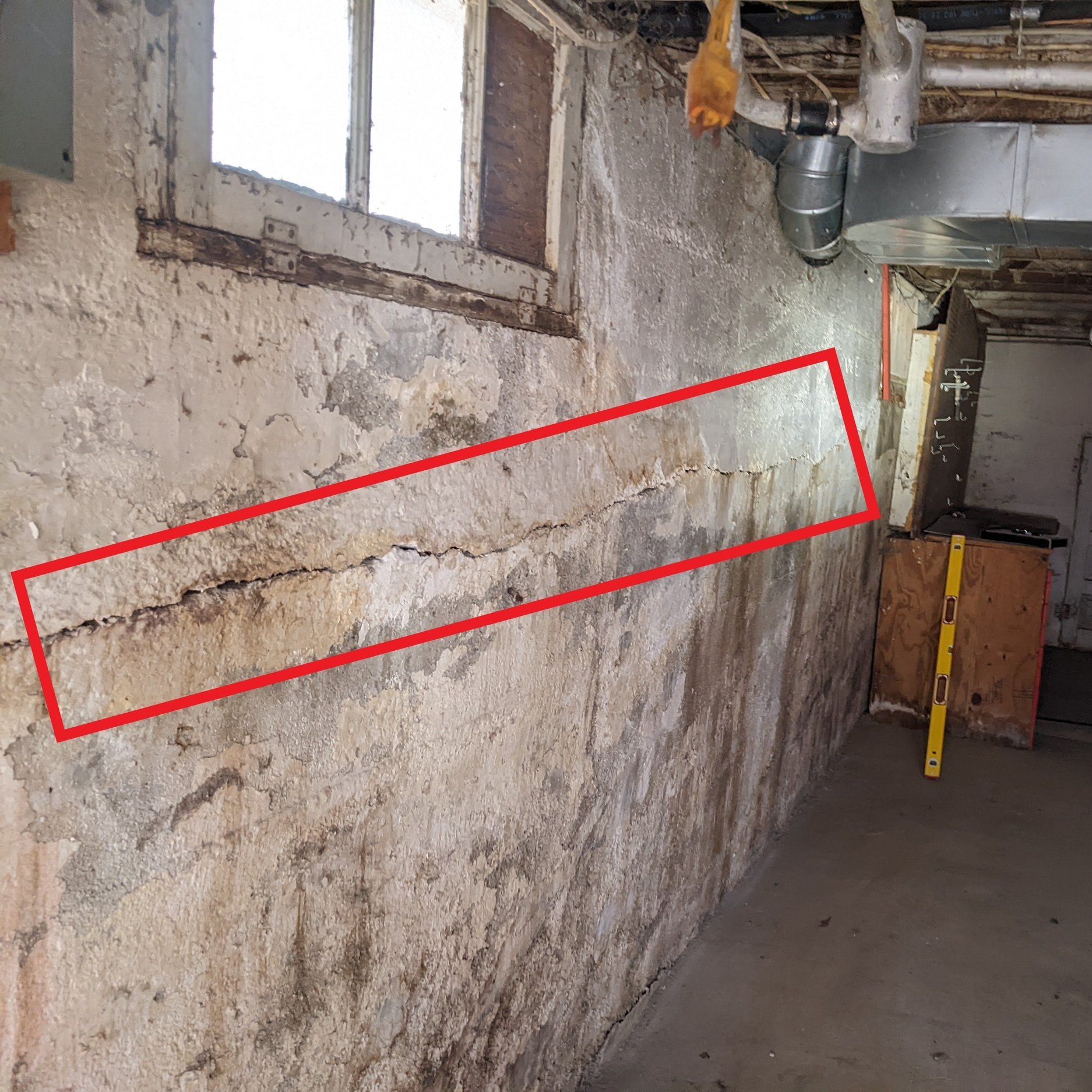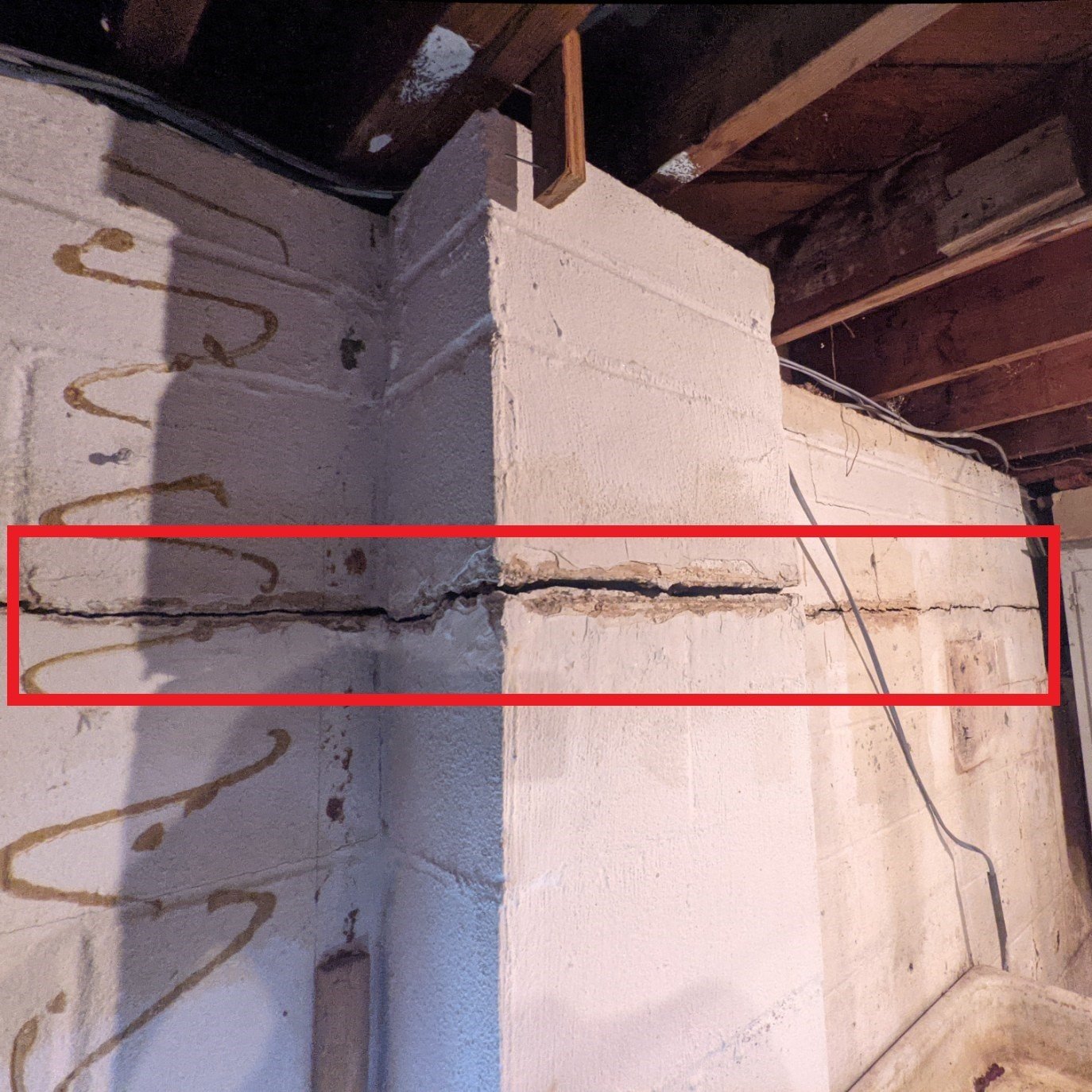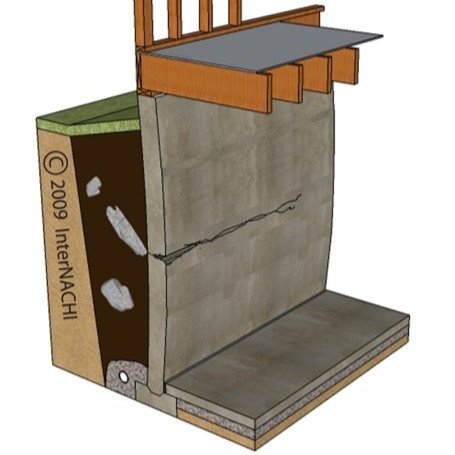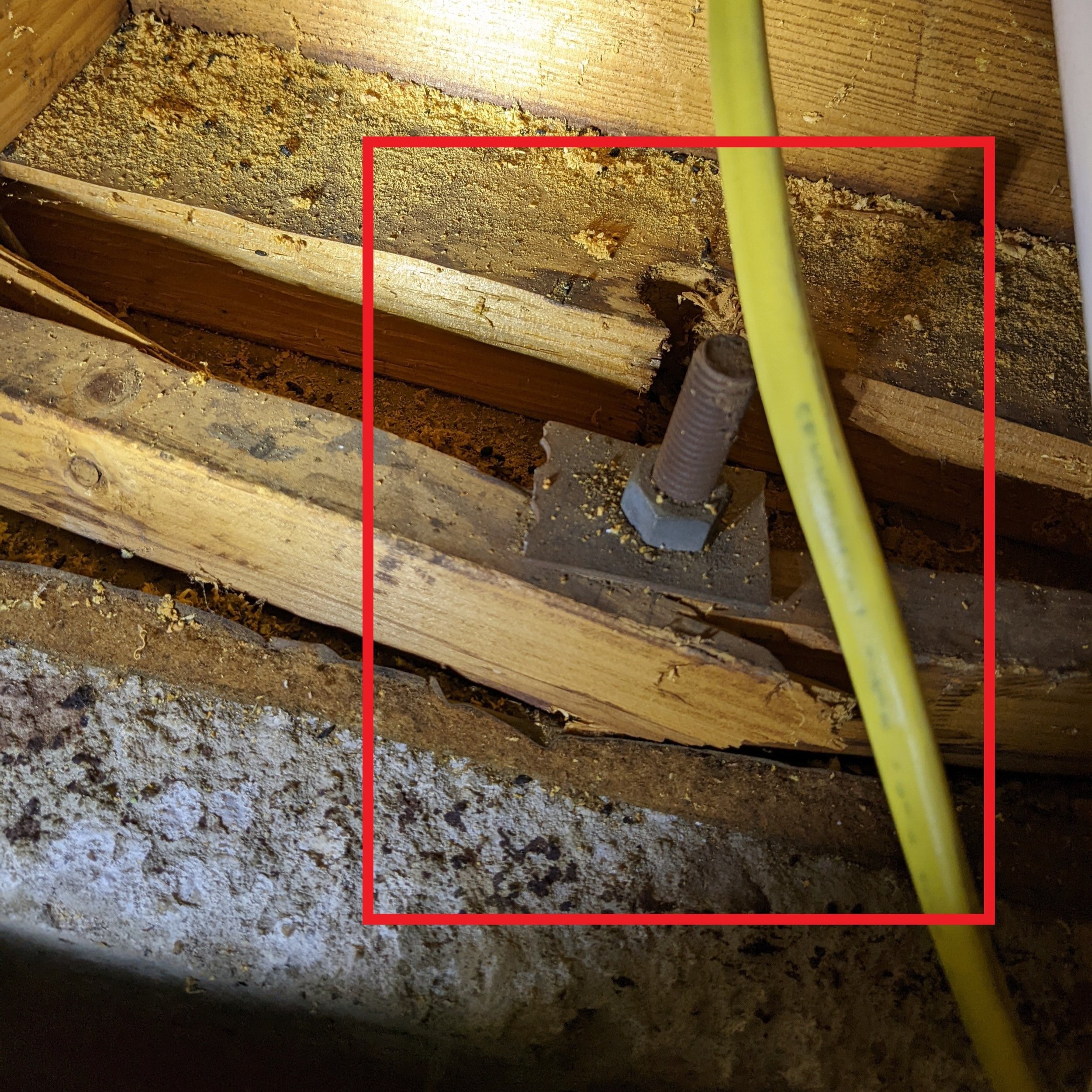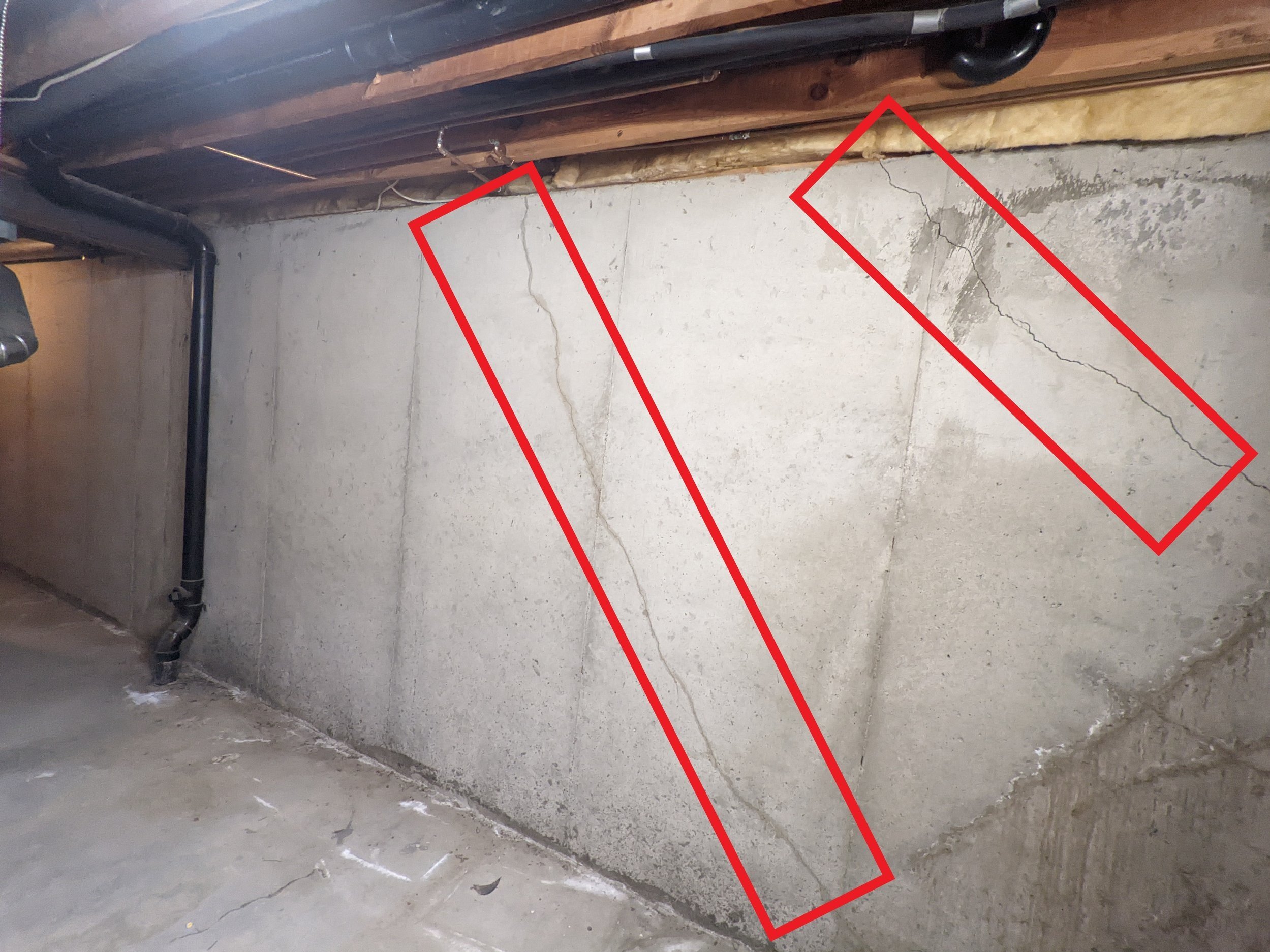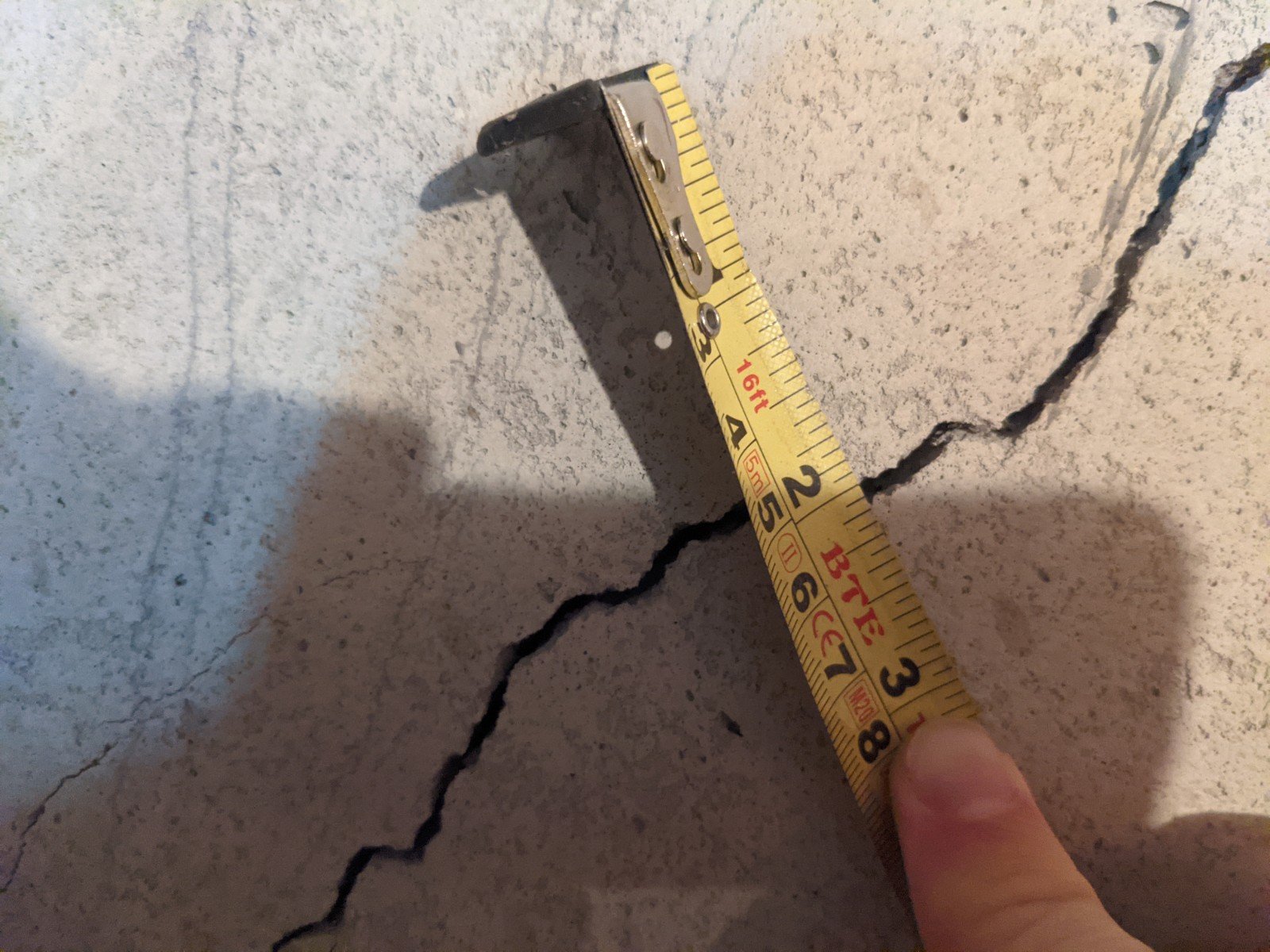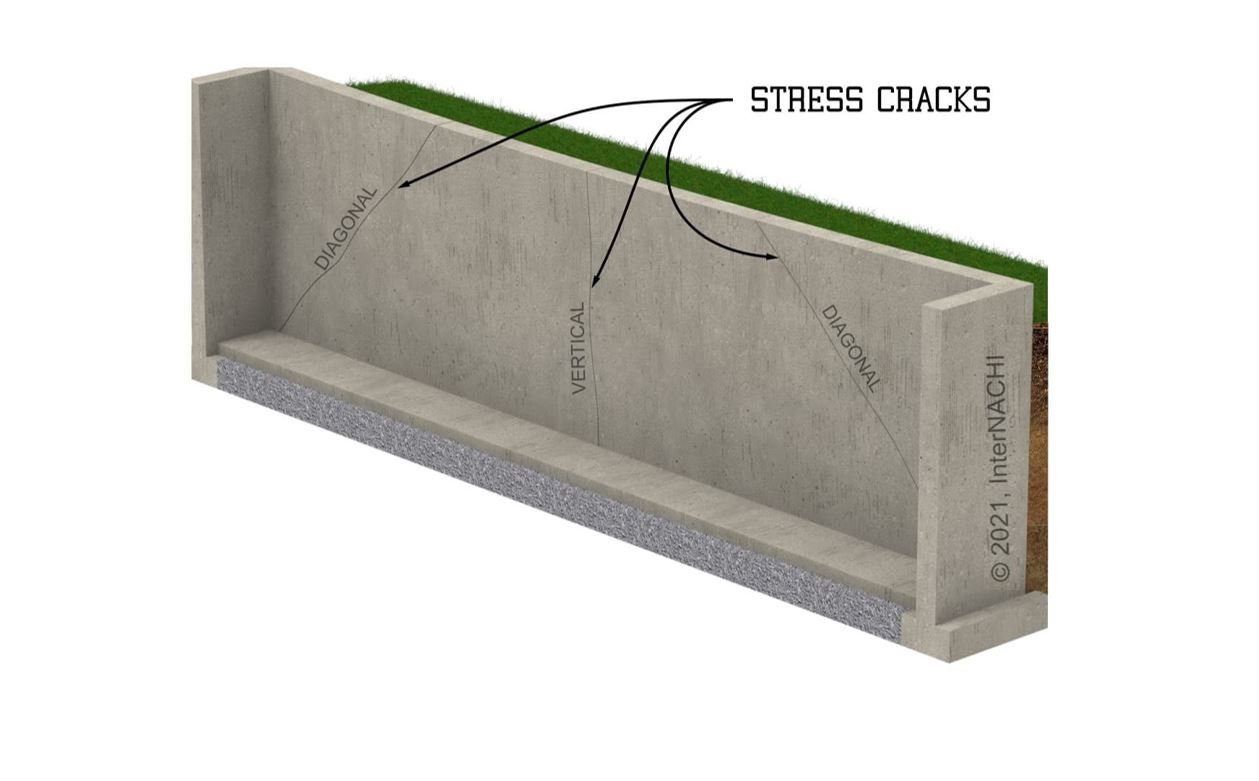The Foundation Crack That Should Get More Attention
Horizontal cracks get a lot of airtime. Probably because they are big, ugly, and easy to spot. But did you know that other, less-talked-about crack patterns can signal the same type of foundation movement and necessitate the same type of repairs?
Diagonal crack patterns don’t seem to garner as much attention as horizontal crack patterns, but they can also signal lateral foundation movement. In fact, among the foundations we see that require repairs, diagonal cracks are more common than horizontal cracks.
This may come as a surprise to some, so let’s start with a high-level explanation and then dive into the details.
At a high level, when a foundation wall pushes in, a couple of different things can happen. The wall can bow (i.e. bulge in the middle) and eventually buckle. In this instance, you get a horizontal crack. Alternatively, the top of the wall can lean or tilt inward. In this instance, you get one or more diagonal cracks (running from the bottom corner to the top middle portion of the wall). Neither crack pattern is inherently better or worse—they just indicate different mechanisms of lateral foundation movement.
Now let’s take a closer look at each crack pattern and the circumstances under which it occurs.
As noted, horizontal cracks tend to be big, ugly, and easy to spot. You don’t have to be a super sleuth to spot the problem in the photographs below.
Horizontal cracks occur when the foundation wall pushes in and the sill plate stays attached to the foundation (the sill plate is the piece of wood on top of the foundation wall, which anchors the framed house to the foundation, as shown in the diagram below). In the diagram above, the bottom of the foundation wall is fixed in place by the basement floor and the top of the foundation wall is fixed in place by the sill plate. The wall is bowing under pressure from the soil outside, and with nowhere to go, the wall eventually cracks horizontally.
Frequently, a foundation wall experiencing lateral movement will break free from the sill plate. When that occurs, you will not see a horizontal crack. In fact, among the foundations we see that require repairs, most do not have—and likely will never have—a horizontal crack, because the foundation wall has broken free from the sill plate. The photographs below show a foundation wall that has broken free from the sill plate—one of the bolts that used to anchor the framed house to the foundation wall has sheared through the wooden board forming the sill plate.
If you don’t get a horizontal crack when a foundation wall breaks free from the sill plate, what kind of crack do you get? As you have likely surmised from the introduction, you get a diagonal crack pattern, with one or more cracks running from the bottom corner to the top middle portion of the wall. The photograph below shows two diagonal cracks, and the diagram below shows a vertical crack near the center of the wall, which may also be part of the pattern.
Diagonal cracks may be relatively small (¼” wide or less, as shown in the photograph above), especially if the foundation wall is long or if the opposite wall is a walkout. Additionally, they are not necessarily characterized by shearing or deflection. As a result, they tend to look less ugly and scary than horizontal cracks. Nonetheless, both horizontal and diagonal crack patterns can signal lateral movement necessitating the same scope of repairs.
Of course, discerning foundation movement is generally not as simple as applying bright-line rules to interior crack patterns. While both horizontal and diagonal cracks can indicate foundation movement that necessitates repair, both cracks can also be benign (yes, even ugly horizontal cracks can be relatively harmless, as in the case of spalling near rebar, as shown in the photograph below).
Horizontal crack caused by spalling near rebar.
Nonetheless, hopefully this information about horizontal and diagonal crack patterns helps you spot issues with your own foundation or during your walkthroughs with clients.
If you or your clients have a foundation crack that needs a closer look, Schroeder Engineering would be happy to help. Contact us today for a foundation inspection.


